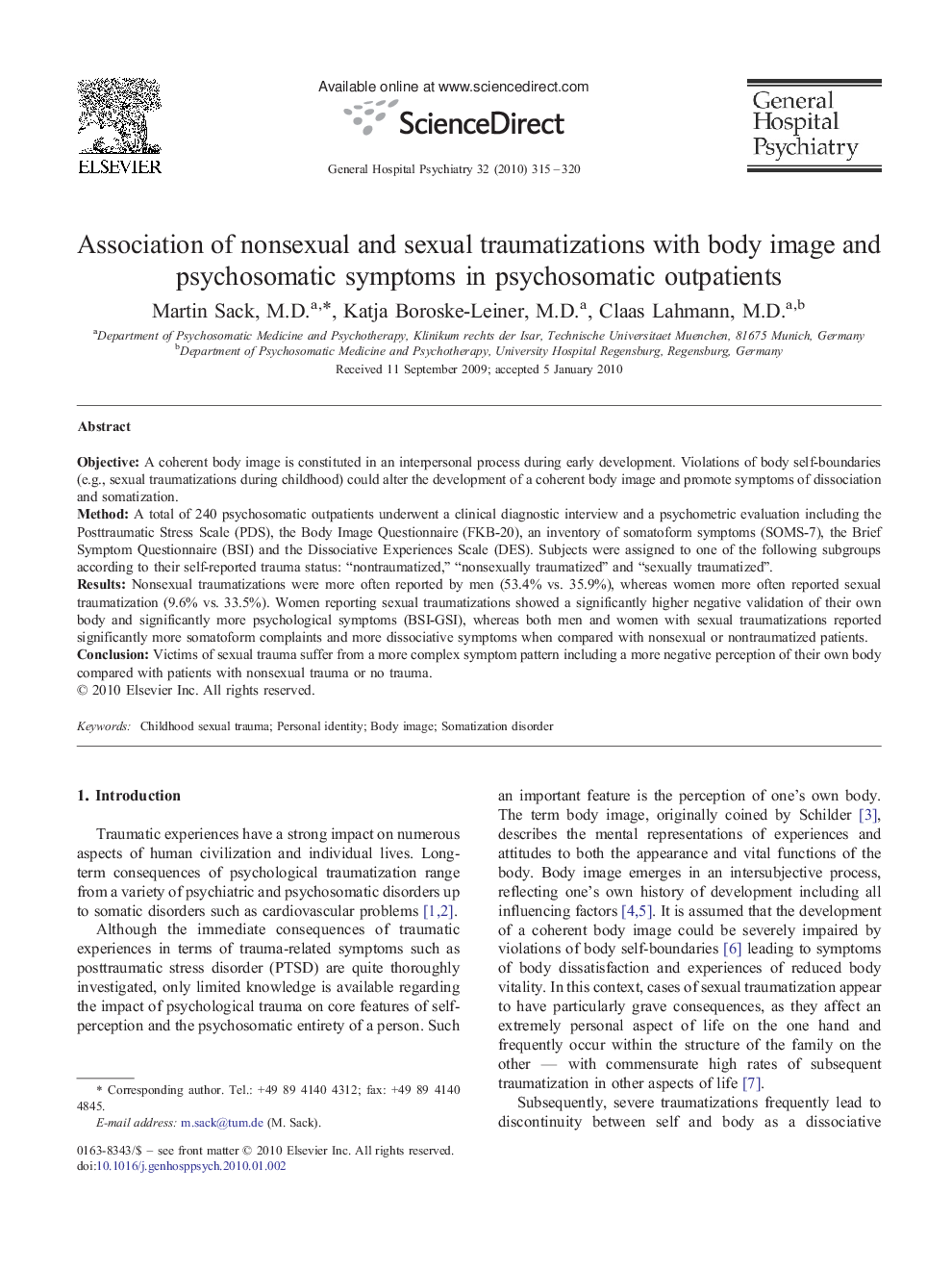| Article ID | Journal | Published Year | Pages | File Type |
|---|---|---|---|---|
| 3238344 | General Hospital Psychiatry | 2010 | 6 Pages |
ObjectiveA coherent body image is constituted in an interpersonal process during early development. Violations of body self-boundaries (e.g., sexual traumatizations during childhood) could alter the development of a coherent body image and promote symptoms of dissociation and somatization.MethodA total of 240 psychosomatic outpatients underwent a clinical diagnostic interview and a psychometric evaluation including the Posttraumatic Stress Scale (PDS), the Body Image Questionnaire (FKB-20), an inventory of somatoform symptoms (SOMS-7), the Brief Symptom Questionnaire (BSI) and the Dissociative Experiences Scale (DES). Subjects were assigned to one of the following subgroups according to their self-reported trauma status: “nontraumatized,” “nonsexually traumatized” and “sexually traumatized”.ResultsNonsexual traumatizations were more often reported by men (53.4% vs. 35.9%), whereas women more often reported sexual traumatization (9.6% vs. 33.5%). Women reporting sexual traumatizations showed a significantly higher negative validation of their own body and significantly more psychological symptoms (BSI-GSI), whereas both men and women with sexual traumatizations reported significantly more somatoform complaints and more dissociative symptoms when compared with nonsexual or nontraumatized patients.ConclusionVictims of sexual trauma suffer from a more complex symptom pattern including a more negative perception of their own body compared with patients with nonsexual trauma or no trauma.
